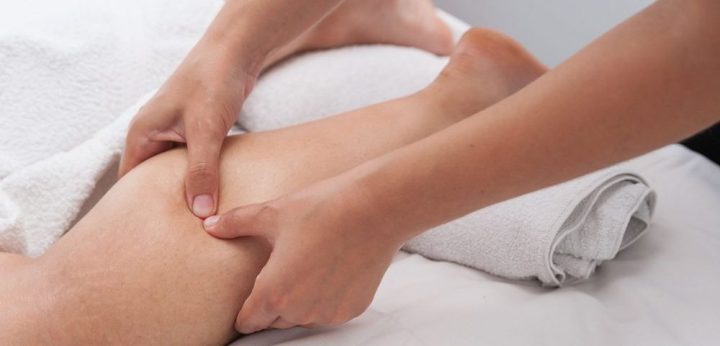Massage Therapy for FAP

If you or a loved one has familial amyloid polyneuropathy (FAP), massage therapy may help reduce the impact of peripheral neuropathy symptoms and lower the sense of stress that this progressive genetic disease can cause.
What is FAP?
FAP is a rare disease caused by mutations in the TTR gene and is characterized by abnormal deposits of proteins called amyloids around peripheral nerves and organs. These deposits usually affect the nervous system and heart, and can lead to many different symptoms.
Peripheral neuropathy symptoms usually appear as an abnormal sensation — numbness, tingling, or burning — in the legs and feet. Autonomic neuropathy symptoms arise when damage occurs in the nerve cells that control involuntary bodily functions such as blood pressure, temperature control, and digestion.
What is massage therapy?
Massage therapy can enhance wellness or help to manage a condition. Generally considered part of complementary and integrative medicine in the U.S., it’s increasingly offered along with standard treatment for a wide range of medical conditions.
According to the American Massage Therapy Association, 75% of respondents to a consumer survey reported that the main reason they got a massage in the last 12 months was medical or stress-related.
Massages generally involve pressing, rubbing, and manipulating the skin, muscles, tendons, and ligaments, and may range from light stroking to deep pressure.
There are many different massage techniques and styles, including those that are for comfort and those for specific conditions or diseases. The types include connective tissue massage, deep tissue massage, geriatric massage, massotherapy, medical massage, reflexology, neuromuscular therapy, Swedish massage, and sports massage.
How can massage therapy help?
FAP patients who lose sensation in their feet or legs due to peripheral neuropathy may have difficulty walking, while those who lose sensation in their hands might have problems with any task that requires fine motor control.
Moreover, chronic stress may adversely affect peripheral nerves, potentially worsening symptoms.
While more research is necessary to confirm the benefits of massage therapy, neuropathy massage treatment may help reduce nerve pain and reduce stress. It may also:
- Alleviate low-back pain and improve range of motion
- Lower depression
- Enhance immunity by stimulating lymph flow — the body’s natural defense system
- Increase joint flexibility
- Pump oxygen and nutrients into tissues and vital organs, improving circulation
- Reduce spasms and cramping
- Release endorphins — chemicals that work as the body’s natural painkiller
Studies of the benefits of massage demonstrate that it is can effectively:
- Decrease anxiety
- Enhance sleep quality
- Increase energy levels
- Improve concentration
- Increase circulation
- Reduce fatigue
Who administers massage therapy?
Caregivers may administer massage therapy, but a trained therapist can be more effective in pinpointing the proper areas and using the right amounts of pressure. What’s key is understanding the patient’s pain tolerance.
In some cases, patients may also self-administer massage therapy using massage sticks or other tools. A massage therapist or physiotherapist can offer advice about such exercises.
How do I find a massage therapist?
Ask your doctor or someone else you trust for a recommendation. Most states regulate massage therapists through licensing, registration, or certification requirements. Don’t be afraid to ask a potential therapist about their qualifications and experience, and how frequent the sessions might be.
What can I expect during a session?
Massages may last between 10 and 90 minutes, depending on your needs. You should wear loose-fitting clothing. You will typically be on a table and covered with a sheet. It’s also possible to receive massage therapy while sitting in a chair.
The massage therapist will likely perform an evaluation through touch to locate painful or tense areas and determine how much pressure to apply. He or she will also likely ask about your symptoms and explain what kind of massage technique will be used.
What are the risks?
Massage therapy appears to have few serious risks if a properly trained therapist performs it. There have, however, been rare reports of serious side effects, such as a blood clot, nerve injury, or bone fracture. Elderly people may be at greater risk of injury.
You may feel a bit sore the day after a session, but massages shouldn’t be painful or uncomfortable. If any part of your massage doesn’t feel right or is painful, let your therapist know right away.
Despite its benefits, massage is not a replacement for regular medical care. Let your doctor know you’re trying massage therapy and be sure to follow any standard treatment plan you’re on.
Because FAP is a progressive disease, your symptoms may change over time so get regularly assessed by your physician to ensure you know the extent of your neuropathy.
Last updated: Dec. 3, 2020
***
FAP News Today is strictly a news and information website about the disease. It does not provide medical advice, diagnosis, or treatment. This content is not intended to be a substitute for professional medical advice, diagnosis, or treatment. Always seek the advice of your physician or other qualified health provider with any questions you may have regarding a medical condition. Never disregard professional medical advice or delay in seeking it because of something you have read on this website.






